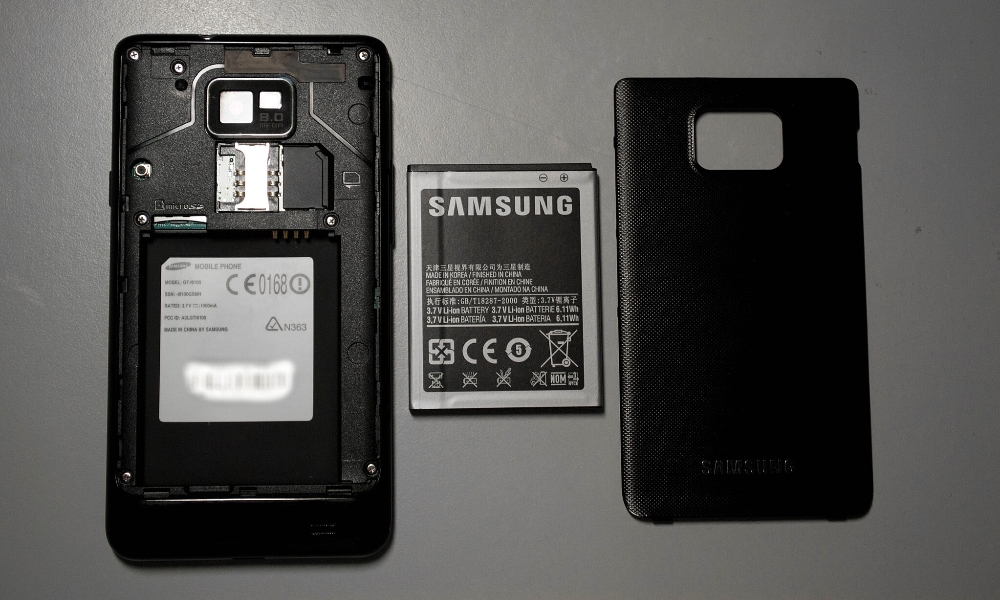New European Rules Will Force the iPhone to Adopt a ‘Readily Removable’ Battery
 Credit: Poravute Siriphiroon / Shutterstock
Credit: Poravute Siriphiroon / Shutterstock
Toggle Dark Mode
First, it was the push for a common charging standard. Now, the European Union has officially adopted new rules that will require the batteries in all electronics to be “removable and replaceable by the end-user.”
Like the rules around a common charging standard, the new regulations are aimed at reducing waste and improving environmental sustainability. User-replaceable batteries are just a small part of the new rules, which “will regulate the entire life cycle of batteries – from production to reuse and recycling.”
This includes mandating the collection of waste portable batteries by producers, recovering lithium from waste batteries, and specifying minimum levels of recycled content for industrial, SLI, and EV batteries.
However, the regulation that’s most likely to affect Apple and iPhone owners is the ruling that, by 2027, end users must be able to remove and replace the batteries in their own devices.
The regulation provides that by 2027 portable batteries incorporated into appliances should be removable and replaceable by the end-user, leaving sufficient time for operators to adapt the design of their products to this requirement. This is an important provision for consumers.
What This Means for the iPhone
Although Apple has bowed to the inevitable and began a switch to USB-C in recent years, it did so only after the European Union forced its hand. The EU began pushing for a common charging standard back in 2009, but Apple initially managed to sidestep this issue with a Lightning to MicroUSB adapter.
The company will likely look for similar wiggle room regarding this latest EU regulation — and it may not have a hard time doing so.
Firstly, while the EU regulation says that batteries must be “readily removable and replaceable by the end-user at any time during the lifetime of the product,” that doesn’t mean companies have to make it as simple as putting an old-school battery compartment on the back of the phone.
After all, Apple isn’t alone in this. As much as the iPhone was pilloried for not having a removable battery when it was first released 16 years ago, most other smartphone manufacturers have long since joined Apple in adopting these designs. Not only does it make modern devices look much cleaner, but it also keeps them slim and makes a huge difference when it comes to water resistance.
Thankfully, EU regulators get this, and they’ve defined “readily removable” as able to “be removed from a product with the use of commercially available tools.”
The rules aren’t about having a swappable battery pack so you can pop in more power while you’re out and about but rather about allowing end users to conduct their own battery replacements when the cell in their smartphone inevitably starts losing its ability to hold a charge.
This means that it’s perfectly acceptable for the battery to be sealed inside the iPhone like it is now, as long as the owner can get at it without too much fuss.
Of course, therein lies the catch for Apple, which has a long history of making repairs as complicated as possible. While Apple finally began offering a DIY self-service repair program last year, it requires the rental of special tools — something that will likely run afoul of the new EU regulation, the full text of which reads:
A portable battery shall be considered readily removable by the end-user where it can be removed from a product with the use of commercially available tools, without requiring the use of specialised tools, unless provided free of charge with the product, proprietary tools, thermal energy, or solvents to disassemble the product.
While Apple may be able to address some of this by offering its “specialised tools” rent-free to European customers, the prohibition on “proprietary tools, thermal energy, or solvents” could force it to redesign future iPhone models to make them easier to access.
For instance, as per Apple’s iPhone 14 Repair Manual, removing the back glass of an iPhone currently requires the use of a “Heated Display Removal Fixture,” a somewhat intimidating piece of kit that would likely qualify as “proprietary” and definitely uses “thermal energy.”
If you’ve been wondering why Apple’s self-serve repair toolkit comes in a two-case, 79-pound package, this wee beastie is a big part of that — it accounts for one of the two cases on its own.
There’s also Apple’s System Configuration process that “serializes” batteries and other parts to each iPhone. Apple has recently simplified that so that a call to Apple’s Repair Support team is no longer required, and it provides the service for free, so while it’s not clear where this fits into the new EU rules, it’s probably the least of Apple’s concerns.
The European Council passed the Regulation concerning batteries and waste batteries on Sunday, June 9, in a 25-0 vote with two abstentions, which closes the adoption procedure. The next steps are merely formalities, having the European Parliament sign off on the regulation and publishing it in the EU’s Official Journal to bring it into force. Apple and other electronics makers will then have until 2027 to “adapt the design of their products” to make the batteries “readily replaceable.”










